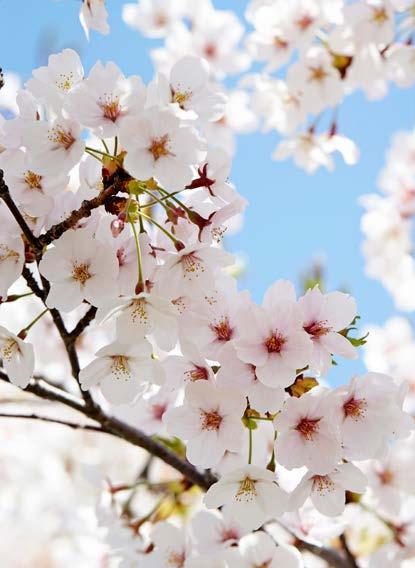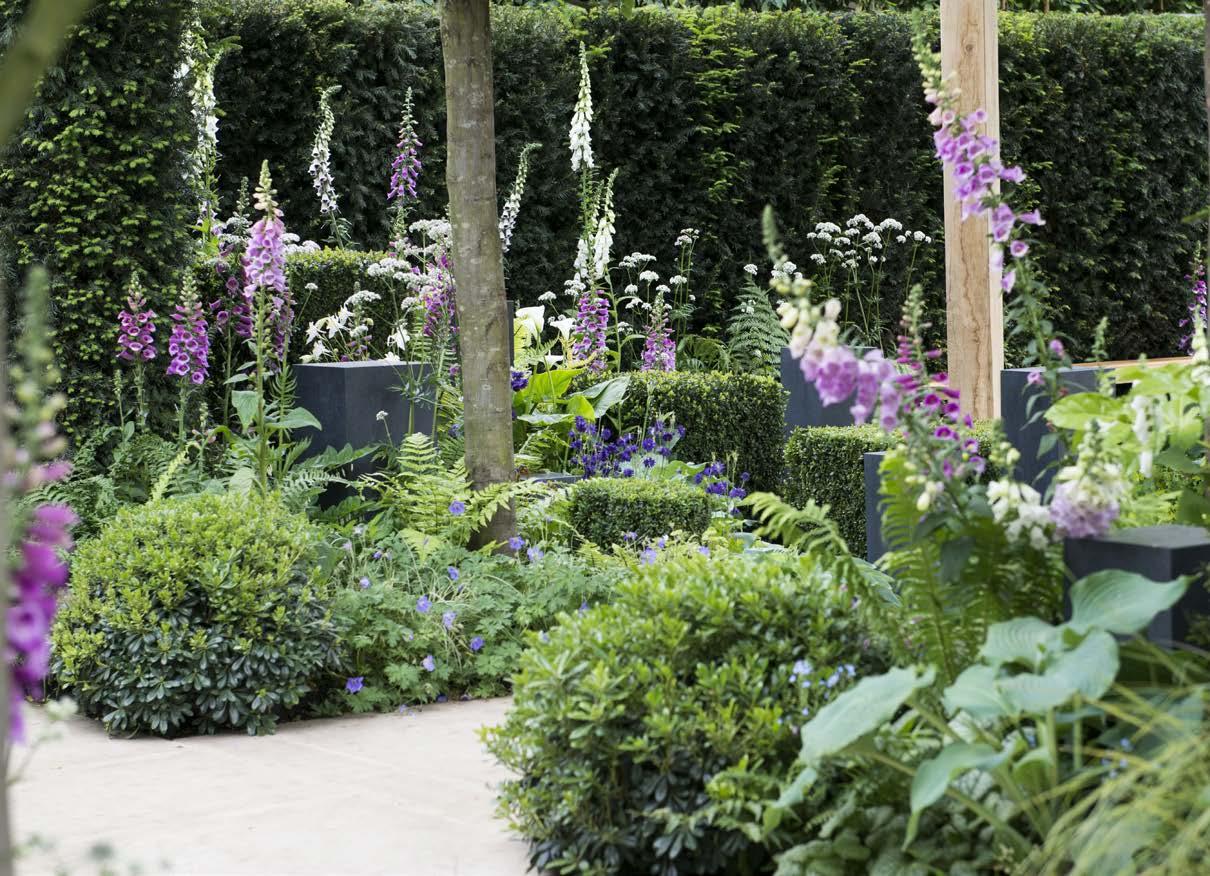
4 minute read
A Spring-kling of Colour
A SPRING-KLING OF COLO U R !
With spring on the horizon, it’s a good time to talk about prepping your
gardens. For some, getting involved with your garden is an incredibly overwhelming task - why is nothing surviving and where do I start? And that is because the practicality of gardening should really be seen as a science. Firstly, it is important to have a good idea of the soil, sun, level changes, climatic factors and thereafter the layout of the space - then you really need to look deeper into the plants themselves and their combinations.
Prepping the garden for spring and summer
The first step I would say to any struggling beginner is to consult with a landscaping professional to get you off on the right start (and avoid wasting capital), then familiarise yourself with a small group of plants and get to know them really well. What I love about gardening is that knowledge is freely shared and there is always something new to learn. Every garden design needs to be adapted to the client’s needs and desires. Some plants might just be there for beauty, while others are more functional for their aroma, medicinal or edible quality. It is not only important to create a beautiful garden, but also a healthy one that doesn't require a huge number of resources to maintain. Here are a few suggestions on where to start:
1. Think about what’s in the background, and think about creating unique spaces laterally.
Is there an unattractive vibracrete wall, architectural links or themes, an existing hedge or tree that must be included as part of the design? When you think about your garden as a set of separate spaces laterally, you look at it differently than if you were to simply think of it as one large space (or longitudinal design), that has a large piece of lawn and narrow hedges on the borders that can often make the garden seem smaller. When separating spaces laterally, consider the movement through the garden and not having everything visible at once. Wider planting allows for more interesting planting and focal points.
2. Choose the plants for their form first, then for the colour of flower.
Just the form of different leaves and textures alone can give the garden enough interest, and often this looks good throughout the year as opposed to just seasonal flowering. Do some research on the growth habits of the plants to make sure that they are correctly positioned for their height and spreading habits. For example, Helichrysum petiolare can take over and swallow other less dominant plants like Iris, Agapanthus or Euphorbia 'diamond frost'.
3. Repeat planting throughout and plant in swathes/clusters/groups.
It is important to choose plants that will thrive in both full sun and dappled shade if necessary. The same applies to the materials used in the design as I often continue themes from the inside, out.
4. When to keep it simple.
If you are designing your house entrance or if you have a small garden, plant evergreen plants that look good throughout the year. With small garden spaces, we can’t afford to have planting that is dormant for half the year, we need the garden to always look lush and vibrant to encourage you to spend time in it. Here are some top evergreen plants for small gardens:
Top 5 evergreen flowering plants for sun:
• Calamintha nepeta (for many small flowers year-round). • Cotyledon orbiculata 'Round Grey' (for grey foliage and round leaves). • Dianella 'Little Rev' (for evergreen strappy leaves in sun/shade). • Pelargonium graveolens 'Rose Scented' (for interesting leaves and small flowers). • Scabiosa incisa (for tall flowers year-round).
Top 5 evergreen flowering plants for shade:
• Camellia japonica (for a flowering shrub/tree). • Liriope 'Evergreen Giant' (hardy, strappy texture in sun/shade). • Murraya exotica (for a scented flowering shrub/hedge). • Viola odorata (for a flowering groundcover). • Zantedeschia aethiopica 'Green Goddess' (for tall flowers and big leaves).





Spring colour & vegetable planting
The last of the raindrops before summer is a great time to be planting bulbs. If you have dense perennial bulbs such as Agapanthus praecox or Dietes grandiflora, it is a good time to divide the bulbs and replant them to fill out planting beds. Most of your shrubs and trees should be planted at the beginning of winter so if you haven’t planted the bones of your garden yet, I would suggest planting before next winter if your water source is scarce.
Four ways to include spring flowers into the garden:
• Stone fruit trees give the most wonderful cherry blossoms (Prunus dulcis 'almond tree',
Pyrus pyrifolia 'pear tree', Malus 'gorgeous crabapple', Prunus cerasifera 'cherry plum'). • Flowering indigenous shrubs like Coleonema album. • Flowering trees like a Magnolia. • Bulbs like Watsonia, Daffodils, Bearded Iris, Hyacinth or Daylilies.
In winter rainfall regions such as the WC, you can plant the following vegetables: • Beetroot • Cabbage • Carrots • Lettuce • Onions • Pumpkin • Spinach • Tomatoes • And don’t forget your companion plants and marigolds!











